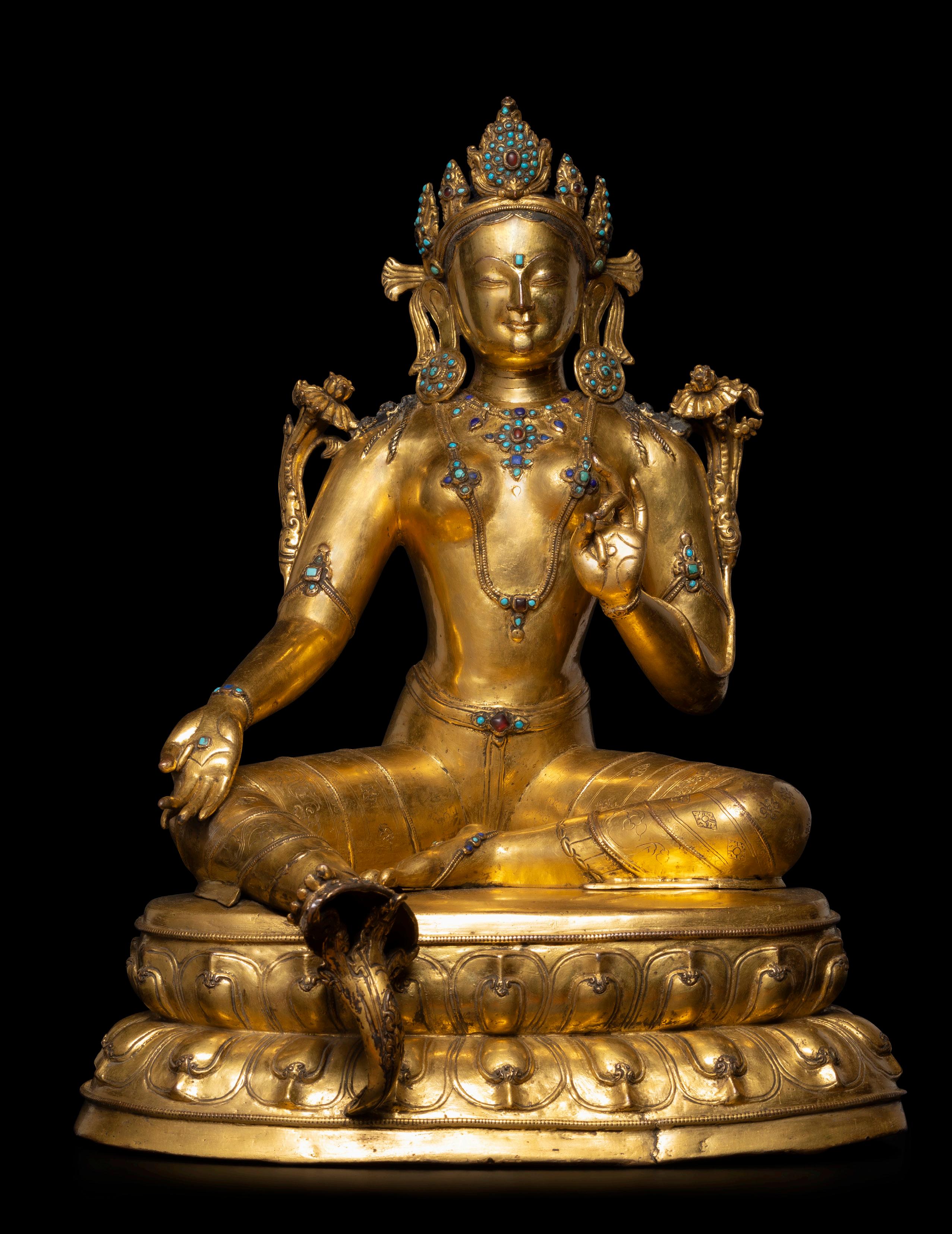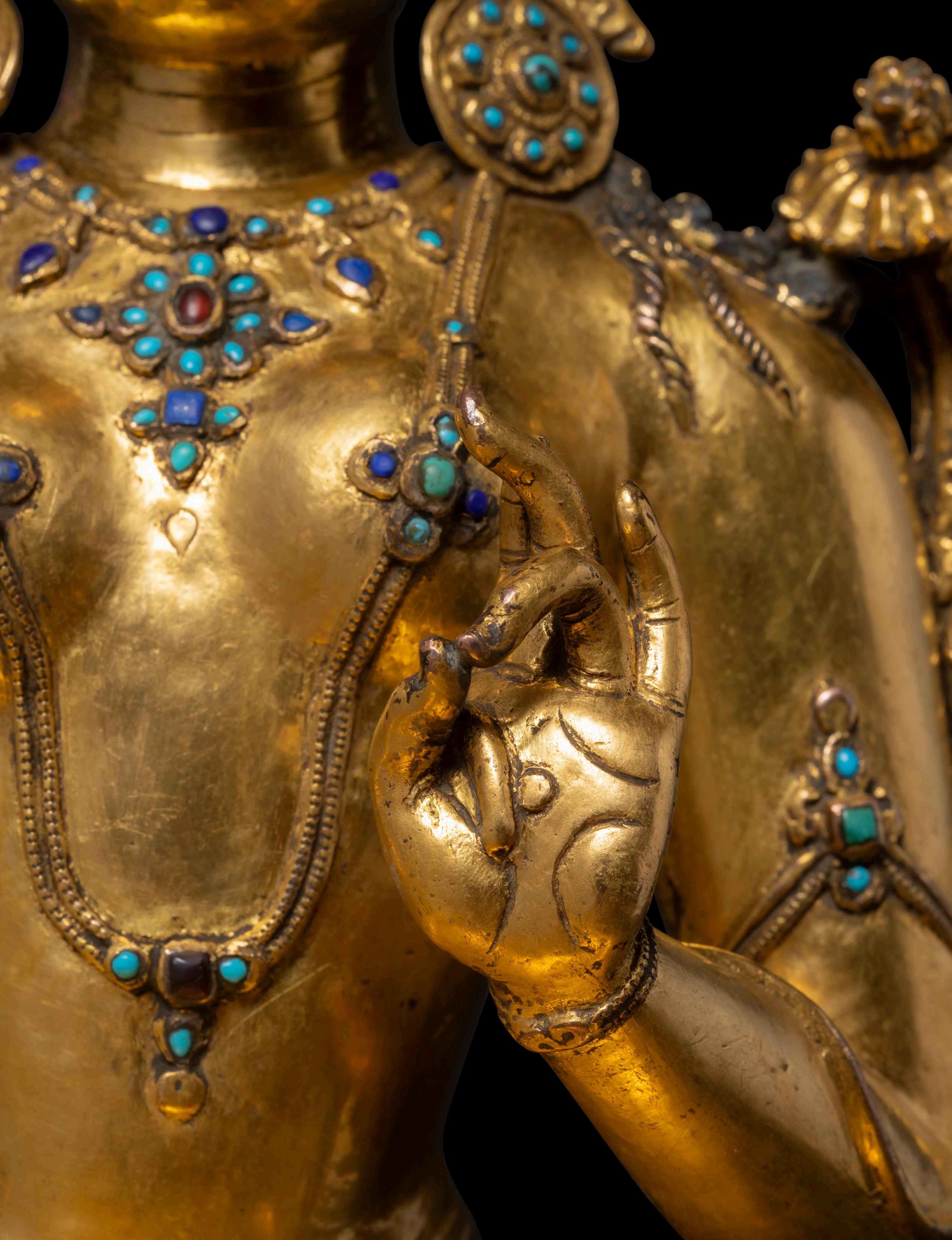
2 minute read
Green Tara (Syamatara)
Tibet, 14th century
Gilt-bronze with semi-precious inlaid stones
18 in. (47.7 cm.) high
Provenance:
Estate of Roy Kirk, San Francisco, acquired in Asia, 1960s, by repute.
J. Russell Wherritt Trust, purchased from the above, 1990s.
Published:
Himalayan Art Resources (himalayanart.org), item no. 2144.
The goddess imbued within this image is Green Tara who patronized Tibet directly and was endowed by Tibetans with the epithets, iconography, and functions of enlightened male buddhas and bodhisattvas. Green Tara is second only to the Buddha for many Tibetan Buddhists. A great deal of laity know the praises of her twenty-one forms by heart, just as well as the monks. Syamatara’s Tibetan name ‘Jetsun Drolma,’ which means ‘Venerable Mother of Liberation,’ points to that for which she is supplicated for—she can swiftly remove obstacles.
The present image of Green Tara depicts her in a form derived from early Indian sources, yet clearly Tibetanized. The goddess is depicted in a way that originated in the Taramulakalpa, composed in the seventh century in India and transported to Tibet: she is a youthful female seated in the position of royal ease on a lotus throne with her right hand lowered in a boon-granting gesture and her left raised in a teaching gesture, a perfectly symmetrical figure, adorned with the thirty-two marks of perfection, with a serene expression and a high chignon with tresses of hair falling down on both shoulders.
Despite the formulaic iconography behind this efficacious ritual work of art, the lost-wax process employed to create this sculpture ensures that this important commission is entirely unique. The origin and date of this richly-gilded bronze figure of Green Tara is made identifiable by stylistic features such as her rectangular urna, aquiline nose, prominent chin, soft pursed lips, tubular limbs, pinched waist, and floral ornamentation in both jewelry and incised patterns. All reveal the influence of a sculptural style created by the indigenous inhabitants of the Kathmandu Valley— the Newars.

The present masterwork exhibits a Nepalese style developed for Tibetan patrons in central Tibet. Previously, the present sculpture was appropriately likened to murals of the Five Tathagatas in the South Chapel of Shalu monastery (just south of Shigatse), painted in the second quarter of the fourteenth century. The crown in particular can be found in the Belri or Nepalese style painting tradition that flourished in Tibet, epitomized by the fifteenth-century Gyantse Kumbum murals of Tsang Province (south-central Tibet). Prominent west-central Tibetan monasteries of the time, such as Shalu, Gyantse, Ngor, and Sakya, were particularly active in reinterpreting and perpetuating traditions associated with the Indo-Nepalese artistic styles imported from Nepal during the second dissemination of Buddhism. It is possible that the present sculpture, given its magnificent quality and size, was created for such a context. This large and beautiful figure of Green Tara is, admittedly, more pleasing in proportion, countenance, and ornamentation than a comparable gilt-bronze figure of Tara held in the aforementioned and important Shalu monastery (see U. von Schroeder, Buddhist Sculptures in Tibet, 2001, p. 967, no. 233B). It is an undeniable masterwork of art.









